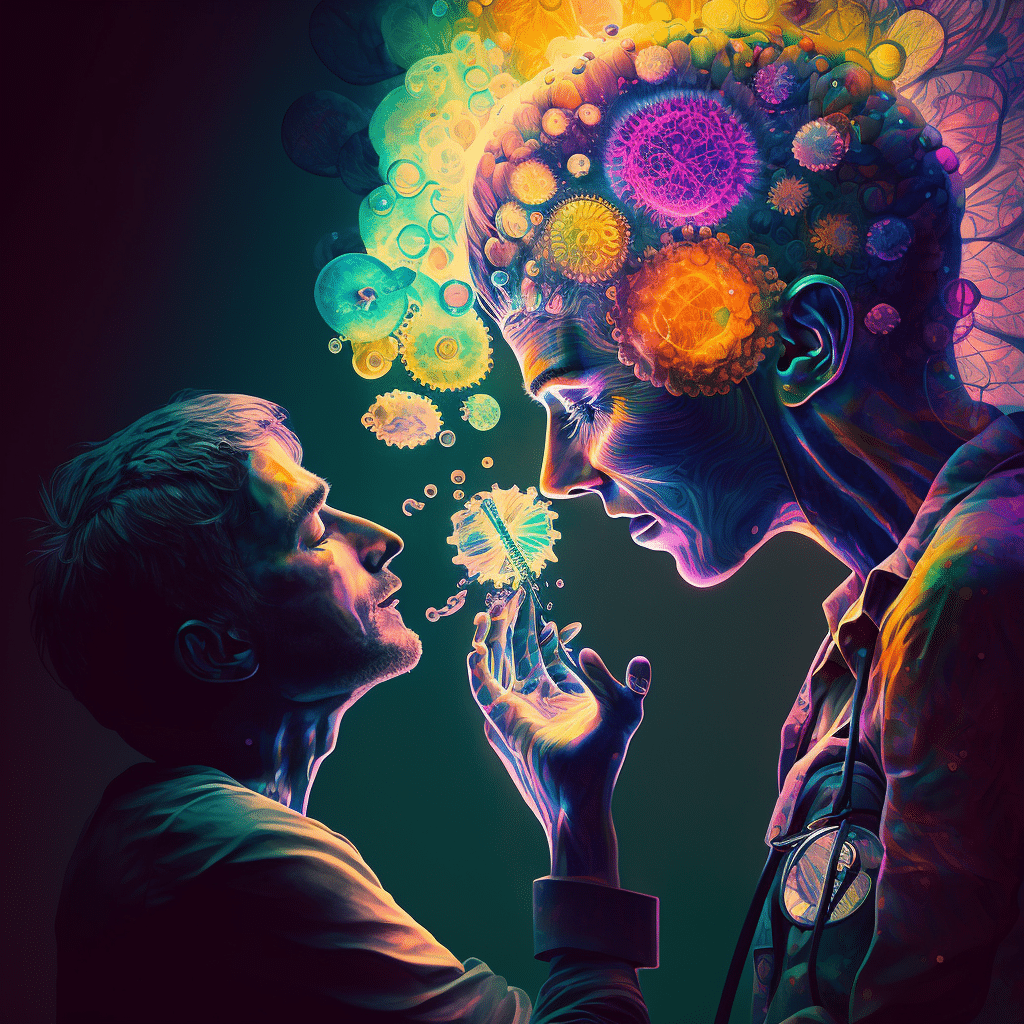Can Psychedelic Assisted Therapy Help Addiction Treatment?
Psychedelic-assisted therapy is currently drawing a lot of attention. There has been a resurgence of interest in the therapeutic potential of psychedelic drugs such as psilocybin (found in magic mushrooms), LSD, and MDMA (commonly known as ecstasy) for the treatment of various mental health conditions.
Re-emerging clinical research suggests that psychedelic-assisted therapy has the potential to serve as an alternative treatment for substance use disorder, depression, and anxiety. For example:
- Recent clinical trials of MDMA-assisted therapy on patients with chronic PTSD found that the drug is an effective treatment, with 67% of participants who received MDMA no longer qualifying for a PTSD diagnosis after 3 treatment sessions. In comparison, only 32% of placebo participants experienced significantly reduced PTSD.
- Ketamine has also shown incredible results in addressing depression, among other mental health issues. Studies have found that low doses of Ketamine can improve severe depression, with results lasting about 6-8 weeks on average.
- Psilocybin has shown positive results in treating anxiety and depression among terminal patients. Researchers from Johns Hopkins found that psychedelic treatment with psilocybin relieved major depressive disorder symptoms for about a month. But a follow-up study discovered that the results could be long-term when this therapy is accompanied by supportive psychotherapy. Psilocybin has received a FDA approval for investigations as a potential treatment for eating disorders.
- LSD, considered a prototype for therapeutic psychedelics, has been shown to help with both alcohol addiction and anxiety related to a terminal illness.
There are also numerous stories and testimonies from individuals who have undergone psychedelic-assisted therapy and reported significant improvements in their mental health.

Many of these stories are shared publicly, in the media, or through personal channels, creating a positive and powerful narrative around the potential of psychedelic-assisted therapy. Patients have reported feeling more open, connected, and attuned to their emotions and thoughts and having a deeper understanding of themselves and their place in the world.
All this is very encouraging. However, it's worth noting that we've been here before with psychedelics. In the 1950s and 60s, numerous studies were happening across the United States to explore the potential of psychedelics in treating various mental health conditions.
Media outlets like CBSNews even covered the story of Arthur King, who received LSD as part of his treatment for alcoholism in 1966. After 6 months of treatment with LSD, Arthur King was able to curb his addiction and was still sober in the 27-year follow-up.
But as these drugs became synonymous with substance abuse, hedonism, and countercultural activities, they were made illegal. LSD was made illegal in 1966, followed by mushrooms in 1968, and most research into the therapeutic potential of psychedelics ground to a halt. At the moment, the use of psychedelics for their therapeutic potential is still highly regulated and not yet widely available. But the renewed interest and investment have fueled further research, much of which is ongoing.
What is Psychedelic-Assisted Therapy?
Psychedelic-assisted therapy is a therapeutic approach that uses psychedelic substances, such as psilocybin, Ketamine, and MDMA, to facilitate therapeutic experiences. These substances are administered in a controlled and supportive environment, usually with the guidance of a trained health professional, to help individuals achieve altered states of consciousness that may lead to increased self-awareness, insight, and emotional processing.
The goal of psychedelic-assisted therapy is to provide individuals with a unique and profound experience that allows them to gain new perspectives on their thoughts, feelings, and behaviors and to work through emotional and psychological challenges.
For example, cancer patients who took part in two different studies reported mystical experiences or spiritualistic experiences after taking psilocybin for their anxiety and depression. According to the studies, psilocybin reduced cancer-related anxiety, hopelessness, and dread immediately after the dose, and the improvements persisted for up to 6.5 months in about 80% of the patients.

Psychedelic-Assisted Treatment and Addiction
A growing body of research suggests that psychedelic-assisted treatment may have promise in easing some of the symptoms of addiction. One way psychedelics may help with addiction is by reducing other mental health symptoms that often co-occur, such as depression and anxiety.
For many people struggling with alcohol and opioid addiction, these symptoms can be a significant barrier to recovery, as they can make it harder to stay motivated and engaged in treatment. By addressing these underlying mental health issues, psychedelics may make it easier for individuals to quit abusing substances.
Psychedelic-assisted treatment may also work by promoting changes in brain function and increasing self-awareness. For example, research suggests that psychedelics may help to "reset" the brain by fostering new neural connections and reducing negative thought patterns. By facilitating these changes in the brain, psychedelics may help individuals break free from patterns of addictive behavior and develop healthier coping mechanisms.
Studies have shown that psychedelics reduce both alcohol use and smoking. The success rates are higher than what doctors see with other therapy or medication alone.
How Does Psychedelic-Assisted Therapy Work?
While researchers do not fully understand how psychedelics work in the brain, several potential mechanisms have been proposed.
- One commonly cited explanation is that psychedelic experiences facilitate mystical or transcendent experiences that can lead to increased psychological insights and personal growth. These experiences may be characterized by feelings of connectedness, unity, and transcendence and may help individuals to gain new perspectives on their lives and problems.
- Another potential mechanism of action is increased suggestibility. Psychedelics are known to lower inhibitions and increase suggestibility, which may make individuals more open to receiving therapeutic suggestions and insights. This may help individuals to break free from entrenched patterns of thought and behavior that have been resistant to traditional forms of therapy.
- Finally, evidence suggests that psychedelics can induce changes in neurotransmitter activity in the brain. For example, psilocybin has been shown to bind to serotonin receptors in the brain, leading to increased activation in specific regions associated with mood and cognition. Similarly, MDMA has been shown to increase the release of oxytocin and serotonin, neurotransmitters related to social bonding and mood regulation.

Risks of Psychedelic-Assisted Therapy for Addiction Treatment
While psychedelic-assisted therapy for addiction treatment may hold promise, there are also potential risks associated with using these substances. They include:
- Psychosis: Psychedelics can cause alterations in perception, thinking, and mood that may lead to psychotic symptoms such as paranoia, delusions, and hallucinations. These symptoms can be particularly dangerous for individuals with a history of psychosis or other severe mental health conditions.
- Fear: During a psychedelic experience, individuals may become overwhelmed by intense emotions, including fear and anxiety. The drugs can induce flashbacks and trauma or cause people to believe they're dying.
- Cardiovascular Issues: Psychedelics can cause an increase in heart rate and blood pressure, which can be dangerous for individuals with underlying cardiovascular issues.
While psychedelics have shown promise as a therapeutic tool, they're not a panacea and don't work for everyone. Factors like dosage, setting, and individual differences in brain chemistry can all impact the effectiveness of psychedelic-assisted therapy. Also, trained professionals should always supervise these substances in a controlled environment, as they can be potentially dangerous if misused.
If you're considering using psychedelics outside of therapy for different reasons, you should seek the support of a Psychedelic harm reduction and integration therapist. A PHRI therapist will help you plan to minimize risks and increase the chances of positive therapeutic outcomes.


